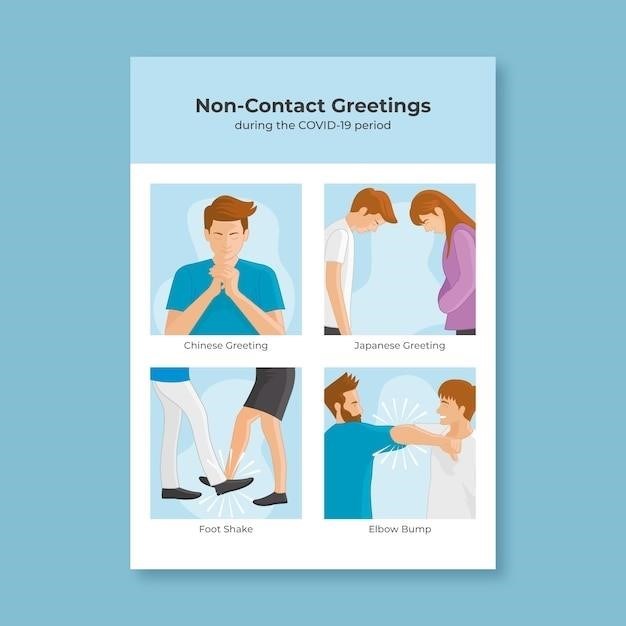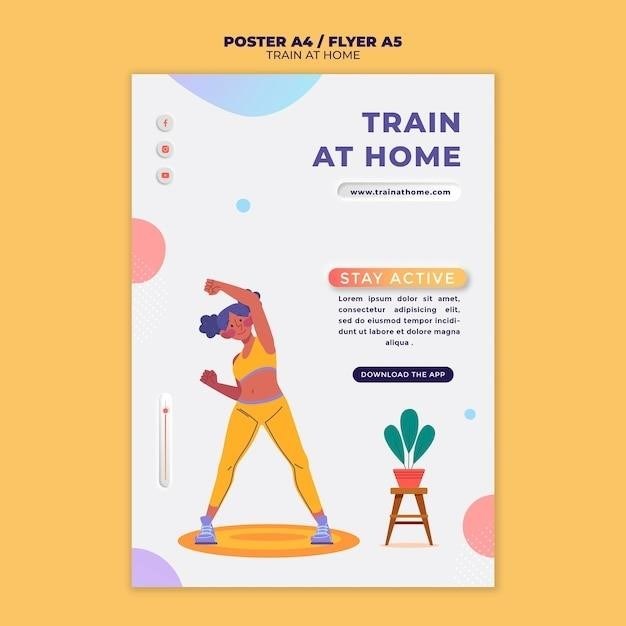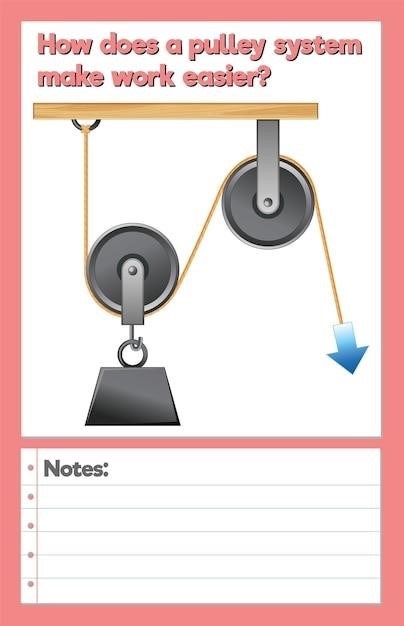Trigger Thumb Exercises⁚ A Comprehensive Guide
Trigger thumb is a painful condition that affects the tendons in your thumb. It’s caused by inflammation of the tendon sheath that surrounds the tendon‚ which can make it difficult or impossible to straighten your thumb. This guide provides a comprehensive overview of trigger thumb exercises and other helpful information to aid in your recovery.
What is Trigger Thumb?
Trigger thumb‚ also known as stenosing tenosynovitis‚ is a condition that affects the tendon that flexes (bends) your thumb. This tendon runs through a tunnel in the palm of your hand‚ which is lined with a sheath called the synovium. When the tendon becomes inflamed or thickened‚ it can become stuck in the tunnel‚ causing a “clicking” or “snapping” sensation when you bend or straighten your thumb. In severe cases‚ the thumb can become locked in a bent position‚ making it difficult or impossible to straighten it.
The inflammation in trigger thumb is caused by a variety of factors‚ including repetitive use of the hand‚ injury‚ and certain medical conditions like diabetes. It can occur in people of any age‚ but it is more common in people who work with their hands or who have certain hobbies that involve repetitive hand movements.
Causes of Trigger Thumb
The exact cause of trigger thumb is often unknown‚ but several factors are believed to contribute to its development. These factors can be broadly categorized as⁚
- Overuse and Repetitive Motion⁚ Activities that involve repetitive gripping‚ flexing‚ or extending the thumb can put stress on the tendon and its sheath‚ leading to inflammation and thickening. This is common in people with jobs that require manual labor‚ such as construction workers‚ mechanics‚ or assembly line workers.
- Injury⁚ A direct injury to the thumb‚ such as a sprain or fracture‚ can also cause trigger thumb. The injury can damage the tendon or its sheath‚ leading to inflammation and scarring.
- Medical Conditions⁚ Certain medical conditions‚ such as rheumatoid arthritis‚ diabetes‚ and gout‚ can increase the risk of developing trigger thumb. These conditions can cause inflammation and thickening of the tendons‚ making them more susceptible to becoming stuck in the tunnel.
- Other Factors⁚ Other factors that may contribute to trigger thumb include pregnancy‚ obesity‚ and certain medications.
It’s important to note that trigger thumb can develop without any identifiable cause. If you are experiencing symptoms of trigger thumb‚ it’s important to see a doctor to determine the underlying cause and get appropriate treatment.
Symptoms of Trigger Thumb
The most common symptom of trigger thumb is a catching or locking sensation in the thumb when you try to straighten it. This is caused by the inflamed tendon getting stuck in the tunnel formed by the pulley system. Other symptoms of trigger thumb may include⁚
- Pain⁚ You may experience pain at the base of the thumb‚ especially when you bend or straighten it. The pain may also radiate up into the palm of your hand.
- Stiffness⁚ Your thumb may feel stiff‚ especially in the morning. This is because the tendon is more likely to be swollen and stuck in the tunnel when you first wake up.
- A Nodule or Lump⁚ You may feel a small nodule or lump in the palm of your hand at the base of your thumb. This is caused by the thickened tendon.
- Clicking or Snapping⁚ You may hear a clicking or snapping sound when you bend or straighten your thumb. This is caused by the tendon moving over the thickened pulley.
- Difficulty with Fine Motor Skills⁚ In severe cases of trigger thumb‚ you may have difficulty with fine motor skills‚ such as buttoning your clothes or writing.
If you experience any of these symptoms‚ it’s important to see a doctor to get a diagnosis and discuss treatment options.

Benefits of Trigger Thumb Exercises
Trigger thumb exercises are a vital part of managing this condition‚ offering numerous benefits that can significantly improve your comfort and functionality. These exercises work by⁚
- Improving Flexibility and Range of Motion⁚ Regularly performing trigger thumb exercises can help to increase the flexibility and range of motion in your thumb‚ making it easier to bend and straighten. This can significantly reduce the catching and locking sensations you may experience.
- Reducing Pain⁚ By improving flexibility and range of motion‚ exercises can also help to reduce pain associated with trigger thumb. As the tendon becomes less restricted and more mobile‚ the pain caused by inflammation and irritation should lessen.
- Strengthening the Muscles⁚ Trigger thumb exercises often target the muscles in your hand and forearm. Strengthening these muscles can help to improve your grip strength and overall hand function‚ making everyday tasks easier to perform.
- Improving Circulation⁚ The repetitive movements involved in trigger thumb exercises can also help to improve circulation in your hand. This can aid in reducing inflammation and promoting healing.
- Promoting Healing⁚ By increasing flexibility‚ reducing pain‚ and strengthening muscles‚ trigger thumb exercises can ultimately promote healing of the affected tendon.
It’s important to note that while exercises are beneficial‚ they should be performed correctly and consistently to see optimal results. If you have any concerns about performing trigger thumb exercises‚ consult with a healthcare professional or a certified hand therapist.
Top Exercises for Trigger Thumb
Here are some of the most effective exercises for trigger thumb‚ designed to improve flexibility‚ range of motion‚ and strength⁚
- Thumb Stretch⁚ This simple yet effective exercise helps to stretch the muscles at the base of your thumb. Lay your hand flat on a surface‚ palm down. Use your other hand to gently extend your thumb backward‚ holding the stretch for 10-15 seconds. Repeat this 5-10 times‚ several times a day.
- Thumb Flexion and Extension⁚ This exercise helps to improve the movement of your thumb joint. Start by holding your thumb firmly at the base‚ then slowly bend the tip of your thumb towards your palm. Hold for a few seconds‚ then straighten your thumb. Repeat 10-15 times‚ several times a day.
- Thumb Opposition⁚ This exercise strengthens the muscles that allow your thumb to touch your other fingers. With your hand flat‚ touch each fingertip with your thumb‚ holding for a few seconds. Repeat 10-15 times‚ several times a day.
- Tendon Gliding⁚ This exercise helps to improve the movement of the tendon through the sheath. Start by making a fist with your hand‚ then straighten your fingers one at a time; Repeat this sequence several times‚ focusing on smooth and controlled movements.
- Finger Lifts⁚ This exercise helps to strengthen the muscles in your hand‚ which can be helpful for trigger thumb. Place your hand flat on a surface‚ palm down. Lift each finger one at a time‚ holding for a few seconds. Repeat 10-15 times‚ several times a day.
Remember to consult with a healthcare professional or a certified hand therapist before starting any new exercise program.
Additional Tips for Relief
While exercises can play a significant role in managing trigger thumb‚ incorporating these additional tips into your daily routine can further enhance your recovery and provide relief⁚
- Rest⁚ Give your thumb a break from activities that aggravate your symptoms. Avoid repetitive motions or heavy gripping‚ especially during flare-ups.
- Splinting⁚ A splint or brace can help to immobilize your thumb and prevent it from bending or straightening. This can reduce pain and inflammation‚ allowing the tendon to heal.
- Ice⁚ Apply ice to the affected area for 15-20 minutes at a time‚ several times a day. This can help reduce inflammation and pain.
- Over-the-Counter Pain Relief⁚ Nonsteroidal anti-inflammatory drugs (NSAIDs)‚ such as ibuprofen or naproxen‚ can help reduce pain and inflammation.
- Massage⁚ Gentle massage of the affected area can help improve blood flow and reduce stiffness.
- Ergonomics⁚ Evaluate your work and home environments for potential ergonomic issues; Adjust your workstation or household tasks to reduce stress on your thumb.
- Warm Water Therapy⁚ Soaking your hand in warm water can help relax the muscles and improve blood circulation.
Remember‚ consistency is key. By implementing these tips alongside your trigger thumb exercises‚ you can effectively manage your symptoms and promote healing.
When to See a Doctor
While trigger thumb exercises and home remedies can be effective for many individuals‚ there are instances when seeking medical attention is crucial. Consult your doctor if you experience any of the following⁚
- Persistent pain or stiffness⁚ If your symptoms don’t improve with home care or worsen over time‚ it’s essential to seek professional guidance.
- Inability to straighten your thumb⁚ If your thumb becomes locked in a bent position and you’re unable to straighten it‚ immediate medical attention is necessary.
- Numbness or tingling⁚ These sensations‚ particularly if they extend beyond the thumb‚ could indicate a more serious underlying condition.
- Redness‚ swelling‚ or warmth⁚ These signs of infection warrant prompt medical evaluation.
- Trigger thumb affecting multiple fingers⁚ If you experience trigger thumb symptoms in multiple fingers‚ a doctor’s assessment is essential.
- Trigger thumb accompanied by other symptoms⁚ If you experience trigger thumb in conjunction with other hand or wrist problems‚ it’s crucial to seek medical attention.
Your doctor can assess your condition‚ recommend appropriate treatment options‚ and provide personalized advice to address your specific needs. Don’t hesitate to seek medical help if you have concerns about your trigger thumb.
Trigger thumb can be a frustrating condition‚ but with the right approach‚ you can effectively manage your symptoms and regain normal thumb function. Regular exercises‚ stretching‚ and proper hand positioning can significantly improve your mobility and reduce pain. Remember to listen to your body and avoid any movements that cause discomfort. If your symptoms persist or worsen‚ don’t hesitate to consult a medical professional. They can provide a thorough evaluation‚ recommend appropriate treatment options‚ and help you navigate your recovery journey.
While trigger thumb can be a challenge‚ it’s important to stay positive and committed to your treatment plan. By incorporating the strategies outlined in this guide‚ you can empower yourself to manage your condition and regain the full use of your thumb. Remember‚ patience and persistence are key to achieving lasting relief from trigger thumb.
Resources
For further information and support regarding trigger thumb‚ we recommend exploring the following resources⁚
- Royal United Hospitals Bath⁚ This website offers a comprehensive guide to trigger thumb exercises‚ including range of movement exercises designed to keep your joints supple and promote smooth tendon gliding.
- National University Hospital (NUH)⁚ NUH provides valuable information on occupational therapy for trigger thumb‚ including targeted exercises and stretches to enhance mobility and reduce pain.
- Eric Hammer Therapy⁚ This website features a detailed explanation of trigger thumb exercises by a registered physiotherapist‚ offering insights into effective techniques and their benefits.
- Virtual Hand Care⁚ Michelle‚ a hand expert and founder of Virtual Hand Care‚ shares her top three trigger thumb exercises‚ providing a practical and concise approach to symptom management.
- St Georges University Hospitals NHS Foundation Trust⁚ This organization offers a wealth of patient resources and information on various hand conditions‚ including trigger thumb.
By utilizing these resources‚ you can gain a deeper understanding of trigger thumb‚ explore diverse exercise options‚ and access valuable information to support your recovery journey.




Be the first to reply